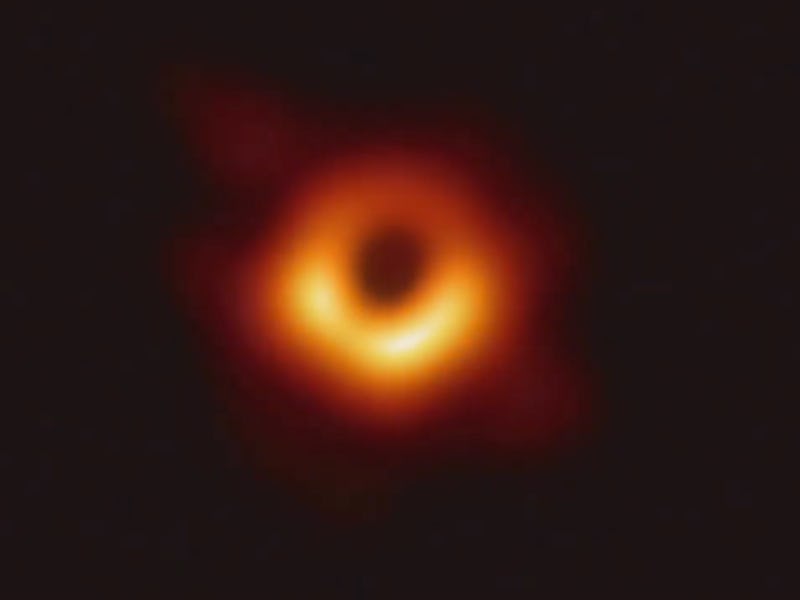2019 was the year a black hole broke the internet
Say "cheese," Messier 87.

In April 2019, scientists managed what had long seemed impossible: They took a photo of a black hole. It was not only a scientific feat and world first — it was also the fruit of massive, global labor. One that deserves every bit of praise and wonder it inspired.
The fuzzy, orange, donut-like image may initially appear underwhelming, but the story behind it is dramatic. It took a massive collaboration, problem-solving, and a trek across the globe-trekking to make this photograph happen.
The black hole is Messier 87 (M87), which lies 55 million light-years away from Earth, far outside of our own Milky Way galaxy. It is so far away, it took eight telescopes spread across five continents to look at this object. Together, these telescopes make up the Event Horizon Telescope project.
This is #19 on Inverse’s [20 wildest space discoveries of 2019](https://www.inverse.com/article/61369-20-wildest-space-discoveries-2019
Over a seven-day period in April 2017, scientists turned all the telescopes towards M87 — effectively turning Earth into one large telescope dish. Together, they captured radio signals from the black hole at super-fast speeds.
Half a ton of hard drives
By the end of the data collection, the telescopes had racked up 5 perabytes of data, Dan Marrone, associate professor at the University of Arizona, told reporters back in April.
“It amounts to more than half a ton of hard drives. Five petabytes is a lot of data: It’s equivalent to 5,000 years of MP3 files,” Marrone said.
The data was transferred onto thousands of pounds of hard-drives, ready for cleaning and analysis. But sending that much data through an email attachment is simply not an option, said Marrone. Instead, they put the drives on planes.
“There’s no internet that can compete with 5 petabytes of data on a plane,” he said.
Labs in Germany and the United States analyzed the data and synced up the different angles of M87 — allowing them to start building an image of the black hole itself.
Chi-Kwan Chan, a researcher at the University of Arizona, told Inverse at the time that the team had seen so many simulated black hole photos, that it almost wasn’t a surprise when the real thing came around.
“We created a huge library of black hole images,” said Chan. “Because we saw so many of them and saw so many possibilities, we were not surprised when we saw the real one.”
The information gathered about M87 along the way also helped scientists confirm many long-standing theories about black holes, including Einstein’s Theory of General Relativity, and that it’s possible to correctly estimate the mass of a black hole.
As 2019 draws to a close, Inverse is revisiting the year’s 20 wildest space stories. Some are awe-inspiring, some are bordering on science fiction, and some are just, well, wild. This is #19. Read the original article here.